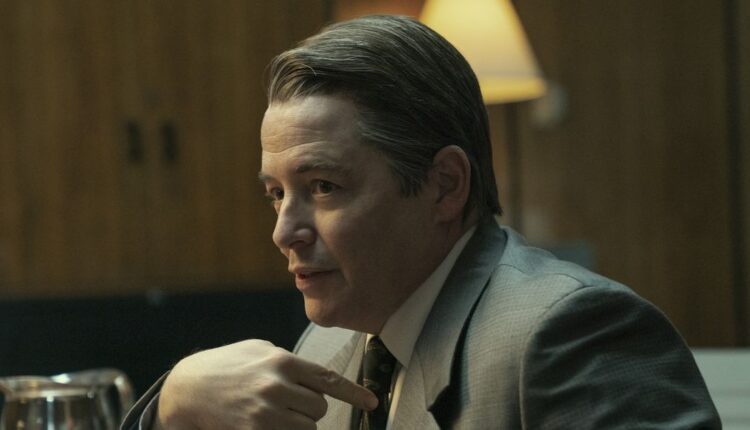Netflix’s new limited series, Painkiller, stars Matthew Broderick in an unnerving, ripped-from-the-headlines tale of the devastation wrought by the opioid epidemic, and particularly the role that OxyContin played in fueling the crisis.
Broderick stars as the real-life Richard Sackler, of the Sackler family that owns Purdue Pharma, the manufacturer of OxyContin. We see Sackler laying the groundwork for the blockbuster success of OxyContin, Purdue’s aggressive marketing of the highly addictive opioid, and the toll it took on regular folks. We also get a glimpse into the many legal attempts to secure justice for that suffering. Broderick’s hard-to-read Sackler sits for a tense deposition, answering (or, arguably, avoiding) lawyers’ questions. And Uzo Aduba plays a federal prosecutor with her sights on the damage done by Purdue and Sackler.
But Painkiller only dips its toes into the wild legal saga surrounding OxyContin. In truth, the company has been sued thousands of times over the drug, which was released in 1996, including by 48 states. Those lawsuits have led to the current proposed Purdue Pharma bankruptcy settlement that would pay out as much as $6 billion to victims. That seemed to be the likely result… until the U.S. Supreme Court stepped in Thursday, temporarily blocking the deal.
Here are the major takeaways to know from the OxyContin legal maneuvering, and a status update on the case.
How did these lawsuits come about?
Let’s start with Purdue Pharma’s, and the Sacklers’, alleged legal culpability in the opioid crisis. For years, Purdue’s marketing downplayed the addictive nature of OxyContin, the New Yorker explains, even as Purdue (along with ostensibly the Sacklers) was aware of rampant abuse of the medication since at least 2000, from both press reports and its own internal data. Meanwhile, the family earned billions off of a health disaster. In 2003, the Drug Enforcement Administration concluded that Purdue’s “aggressive methods” had “very much exacerbated OxyContin’s widespread abuse.”
When it became clear to the public how harmful OxyContin could be, doctors were more wary of prescribing it. Patients who had become hooked sought out black market opioids, including heroin and, more recently, the highly lethal fentanyl (roughly 50 times stronger than heroin). The result: a skyrocketing increase in overdose deaths (the Centers for Disease Control and Prevention indicate that around 145 Americans die from opioid overdoses every day).
But here’s the legal twist: As states and individuals pummeled Purdue Pharma with lawsuits over its drug, these lawsuits became absorbed into one giant case involving the company. That’s because, largely due to the lawsuits alleging that OxyContin propelled the opioid crisis, Purdue filed for bankruptcy in 2019, as Reuters reports.
So how has the Purdue Pharma case unraveled? And what’s the Supreme Court doing about it?
Well, in July of this year, a lower court approved Purdue’s bankruptcy plan, which would require the Sacklers to pay out up to $6 billion to help address the fallout of the opioid crisis. But more controversially, this settlement would also shield the Sacklers from opioid lawsuits.
Some praised the resolution as a step toward funneling billions toward people hurt by the opioid crisis. But many critics opposed what they considered giving the Sacklers a “pass.” The debate comes down to a question of whether it’s legal for the Sacklers, who have not filed for bankruptcy, to receive the “benefit of their company’s liability protection,” per the New York Times. “Bankruptcy was not meant to be an alternative justice system for powerful corporations and their superrich owners,” University of North Carolina at Chapel Hill law professor Melissa B. Jacoby told the paper.
Consequently, the Department of Justice asked for a delay to the settlement, pending an appeal to the Supreme Court. While legal experts considered the possibility of the Supreme Court taking up the case “unlikely,” that is exactly what’s happening now. The country’s highest justices have agreed to hear a challenge from President Biden’s administration to the legality of the settlement. They will hold oral arguments in December.
The uncertainty over whether such corporate legal protections extend to non-bankrupt entities like the Sacklers, which has divided bankruptcy courts, is now in the Supreme Court’s hands. Those affected by the ongoing opioid crisis will be watching closely. Money going to victims will be delayed. But the Sacklers’ immunity is now in jeopardy.

Paul Schrodt is a freelance writer and editor who also contributes to Esquire, GQ, Money, The Wall Street Journal, and more.


Comments are closed.